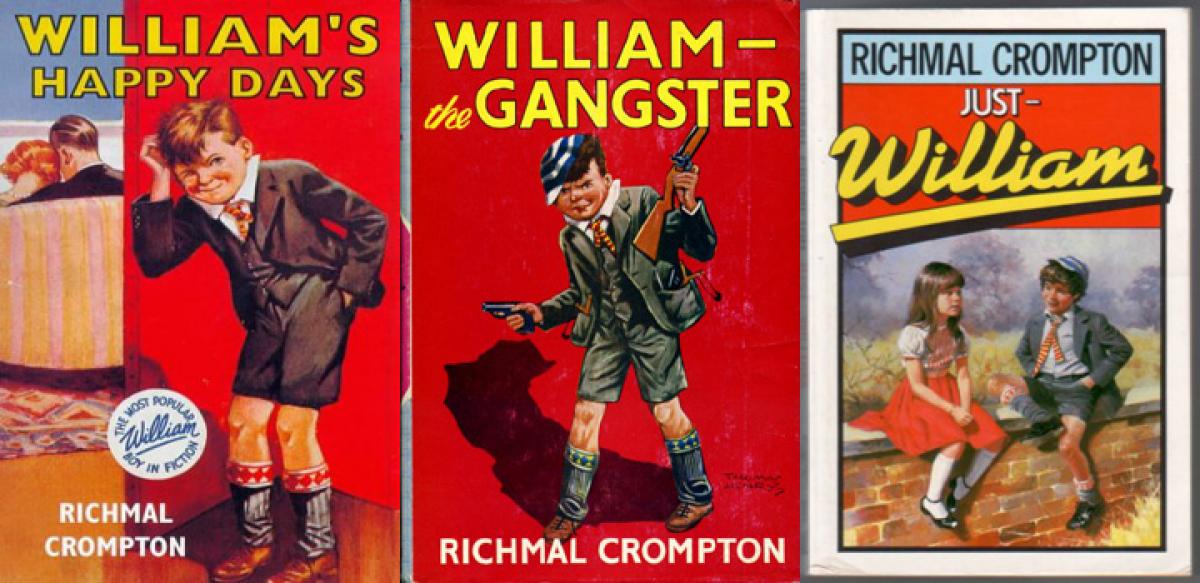Live
- NASA Tracks Five Giant Asteroids on Close Approach to Earth Today
- Pushpa 2 Hits ₹1000 Crore in 6 Days: How It Compares to Other Top Indian Films
- Vivo X200 and X200 Pro Launched in India: Price, Specifications, and Features
- Nitin Gadkari Admits Feeling Embarrassed at Global Summits Over Rising Road Accidents in India
- Comprehensive Review on Indiramma Housing Survey and Welfare Initiatives Conducted via Video Conference
- Jogulamba Temple Records Rs 1.06 Crore Hundi Revenue in 150 Days
- Opposition Slams ‘One Nation, One Election’ Bill as Anti-Democratic; BJP Allies Support the Move
- Celebrate Karthigai Maha Deepam Virtually with Sri Mandir’s LIVE Darshan Experience
- BJP Extends Support to Samagra Shiksha Abhiyan Employees' Strike, Demands Immediate Regularization and Welfare Benefits
- Dr. M. Priyanka Stresses Quality Education, Nutritious Meals, and Cleanliness in Schools
Just In

Did you like reading about naughty children when young - maybe hoping for a few tips? The first you may have come across would be an energetic and enthusiastically mischievous, freckled five-year-old with a distinctive hairstyle. The definitive purveyor of hijinks was, however, his cheeky, grubby but innovative and ingenious elder, who is nearly completing a century but is never aged and is still
Did you like reading about naughty children when young - maybe hoping for a few tips? The first you may have come across would be an energetic and enthusiastically mischievous, freckled five-year-old with a distinctive hairstyle. The definitive purveyor of hijinks was, however, his cheeky, grubby but innovative and ingenious elder, who is nearly completing a century but is never aged and is still popular.
Dennis Mitchell, or Dennis the Menace, first appeared in March 1951, with his creator Hank Ketcham (1920-2001) basing the cartoon strip on his own son's escapades - as once complained forcefully by his wife - and naming his characters after his own family. It is still going strong today, with Ketcham's assistants taking over after his retirement in 1994. (Coincidentally, also created at the same time was a British Dennis the Menace - a spiky-haired, rebellious schoolboy but not as lovable as his American counterpart).
But it is William Brown who pioneered the irrepressible mischief of children, and their perplexity at the "strange" ways of adults. He first appeared in 1922 and his last adventure came in 1970. In this span, the world changed in myriad ways and this was reflected in the background of his stories, but he never aged, always remaining 11.
And many who have read the series with pleasure and praise the matchless evocation of the world and psyche of children don't even realise author Richmal Crompton was a woman. The daughter of a clergyman, Richmal Crompton Lamburn (1890-1969) began working as a teacher after completing her studies, but was forced to retire after a polio attack in 1923 left her disabled.
Although she had been writing for some time now, she now became a full-time author - and so successful that in three years, she was able to buy a home for herself and her mother. A prolific writer, she had over 100 published works, including 41 novels from ‘The Innermost Room’ (1923) to ‘The Inheritor’ (1960), and nine volumes of short stories.
But her most known works were the 39 William books from ‘Just William’ (1922) to ‘William the Lawless’ (posthumously published in 1970). All except one were collections of short stories, ranging to about 10 or so per volume. She also wrote seven William plays and tried to reprise the character for younger children as Jimmy (three books) and for girls as Patricia (one), but neither was successful.
Strong-willed, confident and most oblivious to his appearance, William lives with his parents and two elder siblings in a village in south England. Owner of a scruffy mongrel called Jumble, he and his friends 'Ginger', Henry and Douglas are "The Outlaws" which often create havoc when they try to do something "worthwhile". Their enemy is the fat and spoiled Hubert Lane, who heads a rival gang and despite better resources, comes off worse in confrontations.
At home, there is long-suffering but mother Mary/Margaret who gets on (like most mothers) by ignoring his threats and histrionics, his much-vexed father John (who also understands his son very well, having being quite same at a similar age), elder sister, the pretty Ethel, who attracts several admirers who sometimes bribe William in an attempt to pursue their suit, and brother Robert, who is a hopeless romantic, falling in love with nearly every girl he encounters.
William is alternatively a help/hindrance in both their love lives. It is a rich range of adventures William, with or without his friends, gets up to - and each have to be read in their entirety to be relished but some include putting on an animal show to raise funds with a sleeping aunt as an exhibit, creating a situation where a researcher in drinking songs addresses a meeting of teetotallers,
artfully demolishing the image of a perfect (but sneaky) visiting child before the village, turning tables on teachers who pick on him publicly, try to teach an interested Frenchman colloquial English, forestall a home tutor by telling a prospective candidate and his father that each other are hard of hearing, sabotage an attempt to send him to a boarding school by taking advantage of his sister being dressed in period costume for a play, and so on.
But can he still flourish? Though there is a bit of William in all of us, he happens to be from a time where friends, and the great outside, were the preference for recreation, not TV or electronic devices. It is important his exploits continue to be read and have resonance, for, without this spark of innocent mischief, these high-spirited exertions, this independence, we will become a race of dreary, mindless automatons.

© 2024 Hyderabad Media House Limited/The Hans India. All rights reserved. Powered by hocalwire.com







